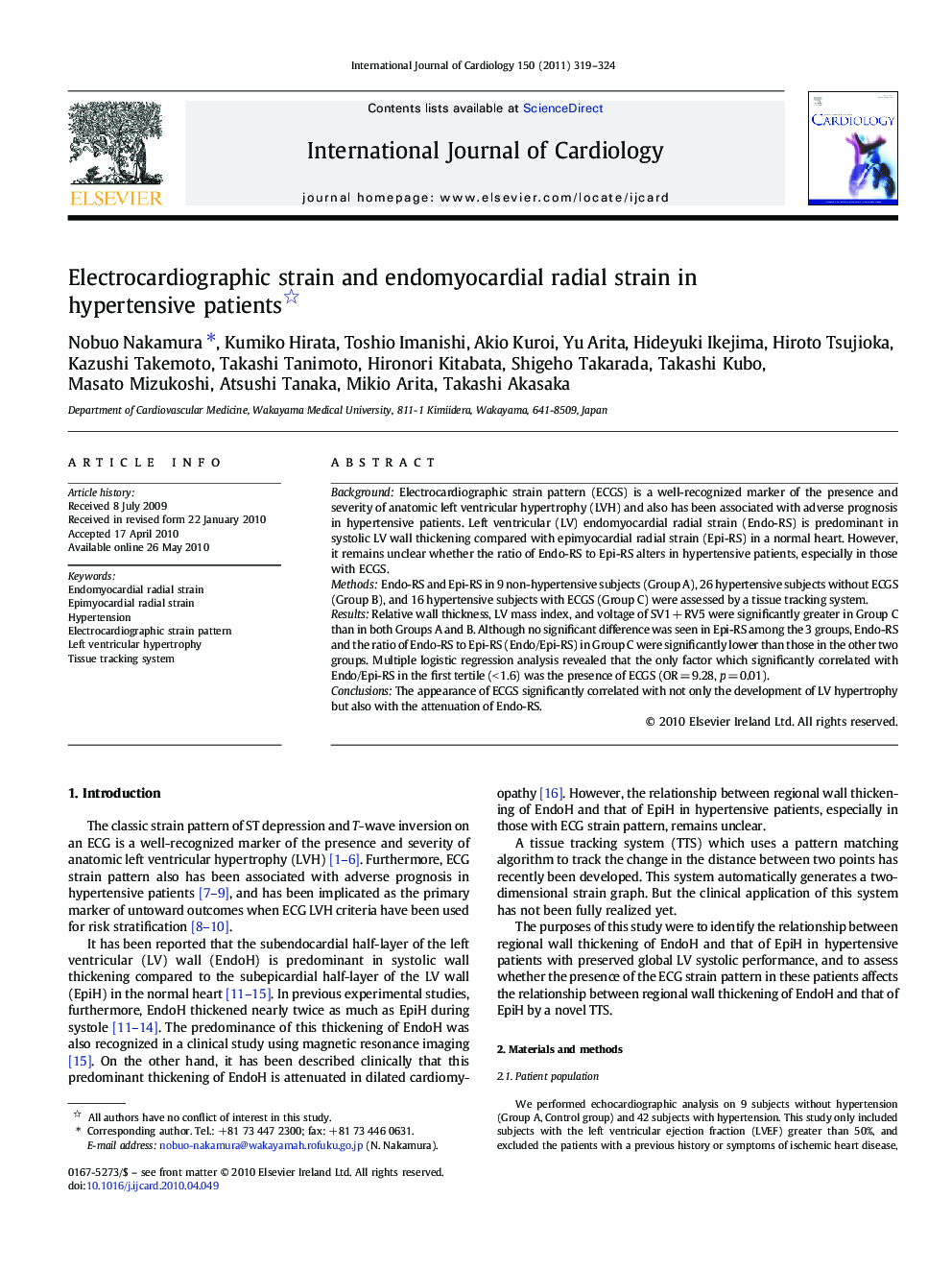| Article ID | Journal | Published Year | Pages | File Type |
|---|---|---|---|---|
| 2930700 | International Journal of Cardiology | 2011 | 6 Pages |
BackgroundElectrocardiographic strain pattern (ECGS) is a well-recognized marker of the presence and severity of anatomic left ventricular hypertrophy (LVH) and also has been associated with adverse prognosis in hypertensive patients. Left ventricular (LV) endomyocardial radial strain (Endo-RS) is predominant in systolic LV wall thickening compared with epimyocardial radial strain (Epi-RS) in a normal heart. However, it remains unclear whether the ratio of Endo-RS to Epi-RS alters in hypertensive patients, especially in those with ECGS.MethodsEndo-RS and Epi-RS in 9 non-hypertensive subjects (Group A), 26 hypertensive subjects without ECGS (Group B), and 16 hypertensive subjects with ECGS (Group C) were assessed by a tissue tracking system.ResultsRelative wall thickness, LV mass index, and voltage of SV1 + RV5 were significantly greater in Group C than in both Groups A and B. Although no significant difference was seen in Epi-RS among the 3 groups, Endo-RS and the ratio of Endo-RS to Epi-RS (Endo/Epi-RS) in Group C were significantly lower than those in the other two groups. Multiple logistic regression analysis revealed that the only factor which significantly correlated with Endo/Epi-RS in the first tertile (< 1.6) was the presence of ECGS (OR = 9.28, p = 0.01).ConclusionsThe appearance of ECGS significantly correlated with not only the development of LV hypertrophy but also with the attenuation of Endo-RS.
